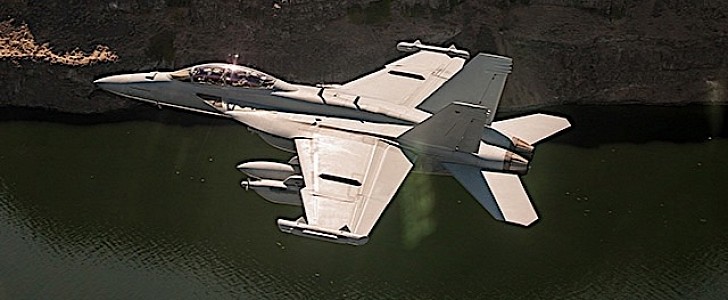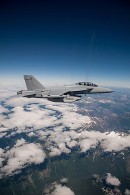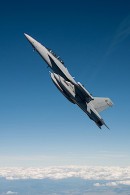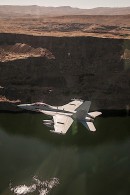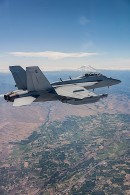In 2007, the two-seat F/A-18F Super Hornet fighter plane received a variant called EA-18G Growler. Meant for the U.S. Navy, it was supposed to replace the Northrop Grumman EA-6B Prowler as the branch’s most important electronic warfare platform.
Since its introduction, a lot has changed in the world, including in terms of enemy capability. That is one of the reasons the Navy decided to task Boeing with upgrading its fleet of Growlers.
At the end of last week, the aerospace company announced it has kicked off a five-year-long modernization process that will see the airplanes getting increasingly better and deadlier at their jobs.
Called Block III, the set of upgrades will see the planes receiving an updated structural and mission systems architecture. The so-called Airborne Electronic Attack System Enhancements modification will allow Growlers to handle the more complex electromagnetic environments of the modern world. At the same time, the security and speed of data transfers will be enhanced as well.
“We’re excited to have the Growler industry team here working on capabilities that will bring the fleet enhanced electronic surveillance, enhanced data link and the ability to carry the Next Generation Jammer pod,” said in a statement Capt. Chris “Needles” Bahner, commander, Electronic Attack Wing, U.S. Pacific Fleet.
“We look forward to being a cooperative partner with PMA-265 and PMA-234 at Naval Air Systems Command and the Growler industry team on this exciting work.”
Boeing plans to upgrade the entire fleet of Navy Growlers over the next five years, starting with June 2021. Over 150 of them have been produced to date, which means the target is about 30 per year.
The U.S. Navy uses the Growlers to jam radar and communications of the enemy forces, disabling their capability of detecting and tracking American and allied forces. The hardware needed for these tasks is located in the gun bay and two wingtip pods.
At the end of last week, the aerospace company announced it has kicked off a five-year-long modernization process that will see the airplanes getting increasingly better and deadlier at their jobs.
Called Block III, the set of upgrades will see the planes receiving an updated structural and mission systems architecture. The so-called Airborne Electronic Attack System Enhancements modification will allow Growlers to handle the more complex electromagnetic environments of the modern world. At the same time, the security and speed of data transfers will be enhanced as well.
“We’re excited to have the Growler industry team here working on capabilities that will bring the fleet enhanced electronic surveillance, enhanced data link and the ability to carry the Next Generation Jammer pod,” said in a statement Capt. Chris “Needles” Bahner, commander, Electronic Attack Wing, U.S. Pacific Fleet.
“We look forward to being a cooperative partner with PMA-265 and PMA-234 at Naval Air Systems Command and the Growler industry team on this exciting work.”
Boeing plans to upgrade the entire fleet of Navy Growlers over the next five years, starting with June 2021. Over 150 of them have been produced to date, which means the target is about 30 per year.
The U.S. Navy uses the Growlers to jam radar and communications of the enemy forces, disabling their capability of detecting and tracking American and allied forces. The hardware needed for these tasks is located in the gun bay and two wingtip pods.
